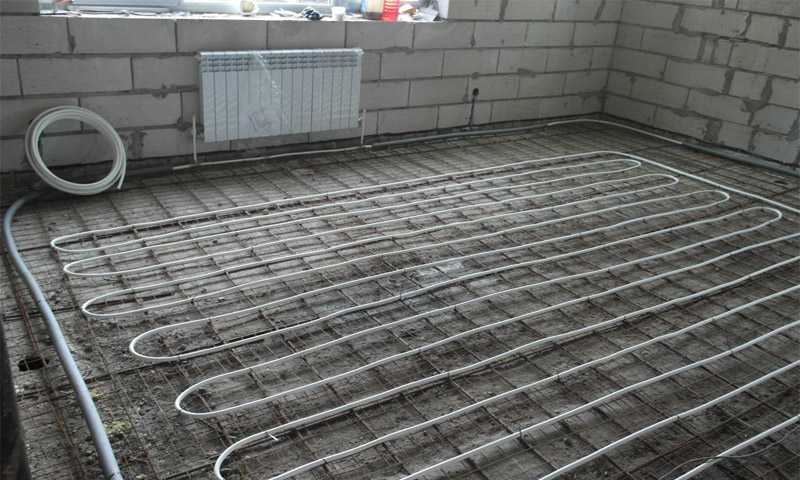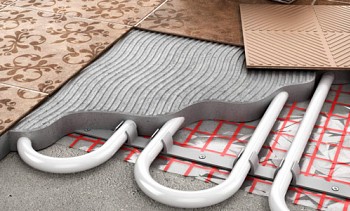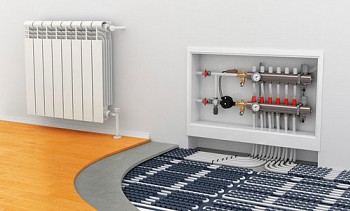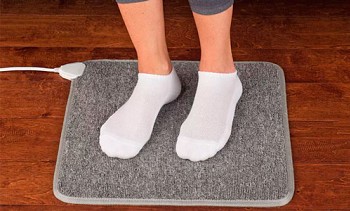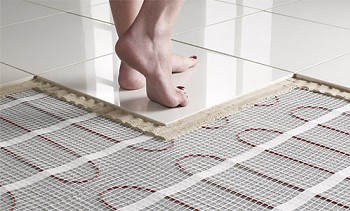And in winter we go barefoot: which floor is better to wind
The idea of underfloor heating is by no means an invention of the present. It was used by the ancient Romans when they built their luxurious baths. And today we are happy to walk barefoot on a warm laminate or tile, heated by one of two options - either a pipe system with hot water, or electricity. Well, what kind of underfloor heating is better - easier to install, more economical, more convenient to use - the answers are in our material.
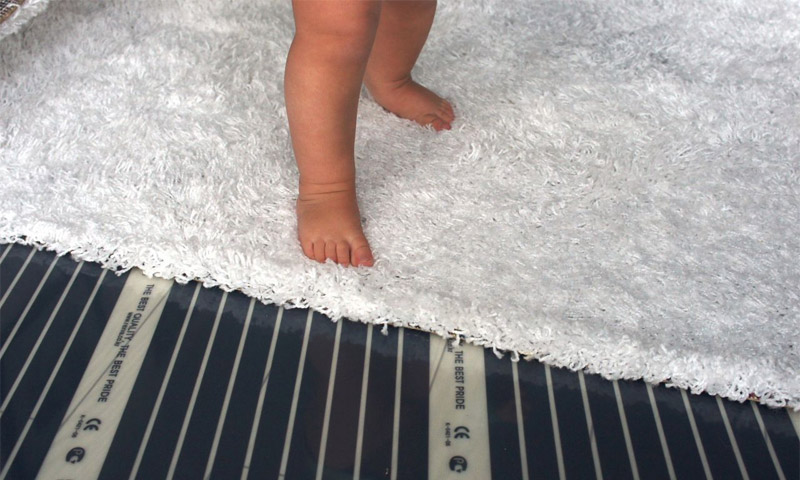
Content:
Two types of underfloor heating: how they work, what are characteristic
Common to both systems is that they are hidden under the floor, without direct contact with the room air. So no convection, accompanied by the raising of dust, can occur. Due to this, the air does not dry out, as is the case with the use of floor heaters.
Water underfloor heating - conveniently not always allowed
Many people choose warm water-type floors because of their low cost of operation. After all, they do not consume electricity, but are connected to the general heating system of the house. That is true, but when they work, energy consumption increases (usually gas), and a low-power boiler may not be able to cope with the load, moreover, the boiler must be automatic. We have to change this boiler, buying a more powerful modern model. We also take into account the gas costs, so that saving (compared with the electric type floor) is obtained only when heating large rooms.
Naturally, it occurred to many people that it is easier and more profitable to connect a water heated floor in a city apartment with central heating. As a result, no extra expenses will appear - beauty! It was not there - such naive people who installed such systems in themselves were very mistaken. It turned out that the money was thrown to the wind. And all because it is strictly forbidden to connect underfloor heating to houses with central heating. For this, they also take a considerable fine.
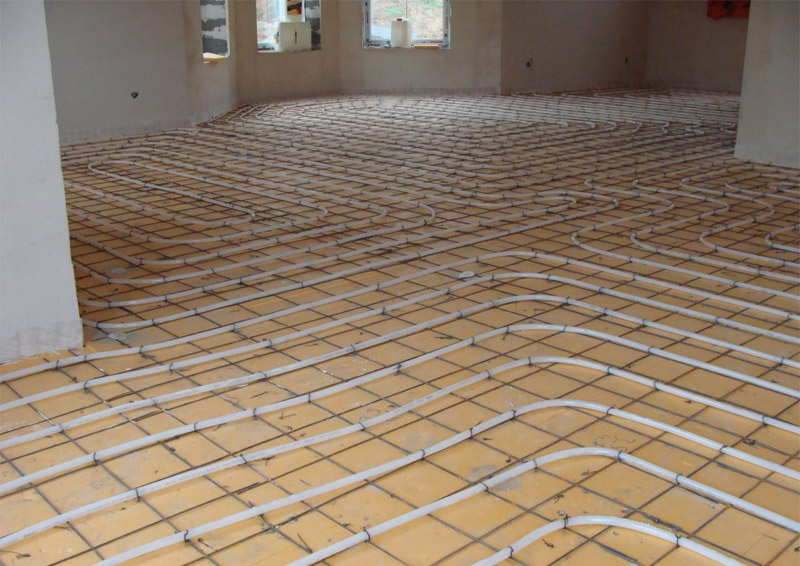
Water heated floor made of metal.
Electric heated floors
In order to make the final decision, which floor is better - electric or water, you need to take a closer look at structures that work on electricity. There are several varieties: cable system, infrared floor and mini-mat system.
#1. Cable floor heating.
This type of “underfloor” heating is a cable system. They consist of separate sections, each of which, in turn, is represented by a shielded cable (with one or two conductors) in two-layer insulation. Cables are interconnected by reliable tight couplings. All these precautions make the heating system absolutely safe even in rooms where it is very damp.
Such a system is economical - for different rooms you can choose different power for the cable used. Indeed, in the kitchen or in the corridor, a floor with a power of 150 to 180 watts per square meter is not needed at all, as for rooms that are not heated (for example, loggias, balconies). A power of 120 watts per square meter is quite enough for the kitchen floor, and 140 watts per square meter for the bathroom. “Cable” floors are the cheapest of all those that run on electricity. But they need a screed - this is a prerequisite. Because of it, the height of the floor increases.
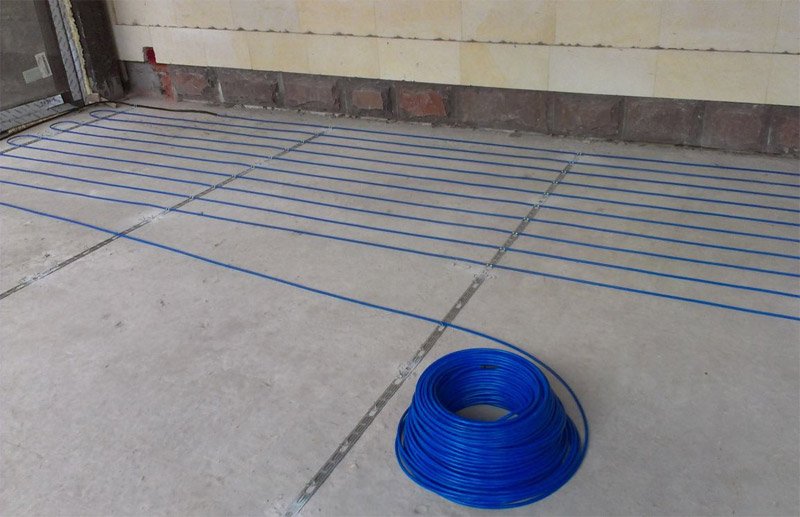
Installation of cable underfloor heating.
#2. What are heating mats.
This is also called the cable system, only very thin (3 millimeters or less).They are mounted on a fiberglass mesh, sold in rolls that look very similar to mats or rugs. Therefore, they began to be called minima. They are mounted very quickly - just roll out such a roll on the base, and then connect the cable to the socket, equipped with a temperature regulator. This type is considered the best underfloor heating for tiles. After all, a tiled coating can be glued directly to the minim.
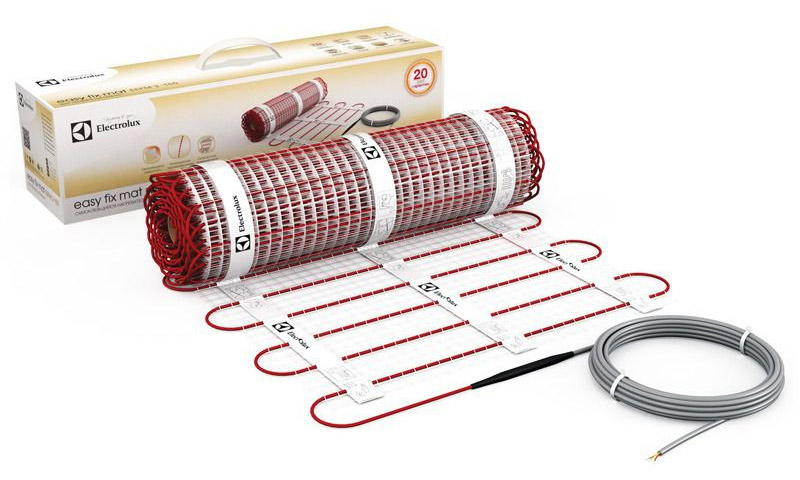
#3. Infrared floor heating.
If we use a special infrared film instead of cables, we get an infrared floor. It also works from electric current, can be installed even under a carpeting or under a laminate, it does not need a concrete screed. Moreover, it is quite possible to mount it almost instantly - in just a couple of hours. And then you can immediately turn it on and use it, since there is no need to wait until the glue hardens or the cement sets.
This type of "heating" floors is good in the sense that during installation there is absolutely no dirt or dust. Therefore, it is quite possible to mount it when the apartment is shining with a brand new repair - nothing will go bad or get dirty. Moreover, the infrared film can be laid not only on the floor, but also on the walls. If you want, even the ceiling in the country can warm it. Unless, of course, the price scares you off, carbon film is expensive.
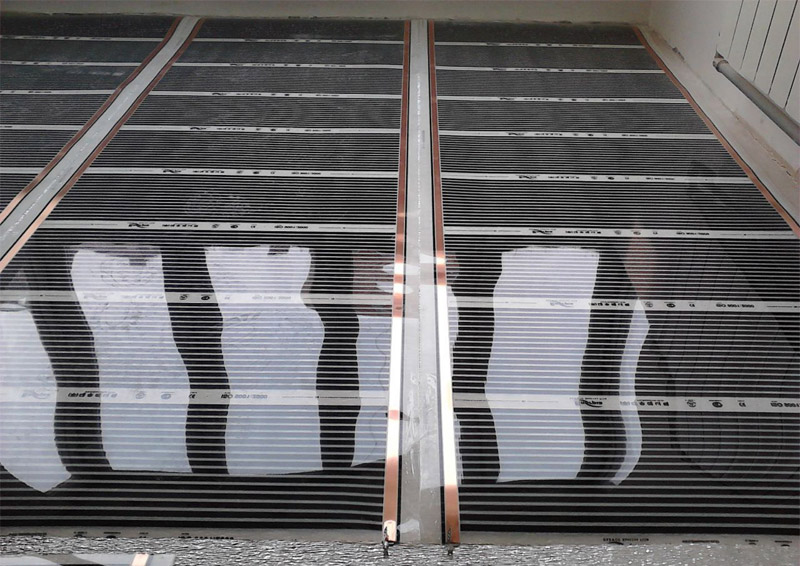
Film infrared heat-insulated floor.
Which warm floor is better than electric or water
Water system
+ A plus:
- If the area of the house is large (more than 60 square meters), then using a water-type floor is economically advantageous.
- Minuses:
- Such a system (like any heating system) needs regular inspection and prevention.
- Installation of pipes with water will cost more, and the pipes themselves, filters and pumps will pretty much empty the pocket.
- These floors are only heated when the boiler is on.
Electric floors
+ Pros:
- Possibility of use in any conditions (even in a sauna, pool or on a balcony);
- You can turn on such a floor even in the summer, if necessary;
- Quick and easy installation, which not only builders, but also lay people can handle;
- Managing such a floor is extremely easy;
- Adjusting the temperature allows you to set the optimum in each room;
- Like ordinary wiring, an electric floor will last at least 50 years without requiring maintenance.
- Minuses:
- If there is no temperature controller, then it is unprofitable to heat large floor planes with electricity.
- Electromagnetic radiation, although small, is available. However, the use of a good shielding braid can minimize it (300 times less than the norm).
Which electric floor is better - comparison table
| Parameters | Cable floor heating | Heating mats | Infrared underfloor heating |
|---|---|---|---|
| Mounting method | It is mounted under a concrete screed at least 3 cm thick. | It is mounted in a layer of tile glue or in a screed, depending on the type of flooring. | The film is laid directly under the coating. |
| Types of flooring | Since the use of screed is mandatory, it is suitable for any coatings. | Tiles, porcelain tiles, wooden floor. Installation under a laminate, a parquet board, a carpet is possible, but a screed layer of at least 20 mm is required. | Any floor covering, but if glue or screed is required to fix the coating, it is necessary to lay a layer of drywall on the film. |
| Possibility of use as the main source of heating | maybe | Only as an additional source | maybe |
| Maximum power | 110 W / m2 | 160W / m2 | 220 W / m2 |
| Possibility of laying on various surfaces | Floor, walls | Floor, walls | Any surfaces |
| The ability to give the desired shape | there is | there is | The film can be cut in increments of 25 cm. |
| Energy Efficiency Compared with convection heaters |
Average | Average | High |
| Security level | Tall | Tall | Tall |
| Warm Up Method | Uniform convection | Uniform convection | Warms up all items |
| The ability to reuse in another room | Not | Not | there is |
| Electromagnetic field | 0.25 μT | 0.25 μT | Hardly ever |
| Life time | More than 30 years | More than 30 years | More than 30 years |
| Warranty | 15 years | 20 years | 20 years |
To better understand the features of each type of electric underfloor heating, we suggest watching the following video.
Video: The purpose of the main types of electric underfloor heating
Choosing a warm floor for specific conditions
In order to finally decide for yourself which warm floors it is better to choose, you must first carefully study the base on which these floors will be laid. And then you can choose at random, and then with chagrin to find out that this heating system does not fit perfectly with the existing base or conditions. Let's take a look at some of the options that may be.
Which floor can be used if the floor is supposed to be filled with screed
If your apartment or house is new or you are doing a major overhaul, then the floor itself is not there. In any case, in most cases this is exactly so. In a private house with autonomous heating system, you can arrange a water floor heating. In the apartment, in this case, a heating cable system is installed. After installing a particular system, the entire base is poured with a cement-sand screed.
What to do if the screed is already available, and there is no way to increase the floor height
It is best to use a mini-mat system. Such a “rug” with heating cables hidden inside is rolled out onto the old base. By quickly connecting it, you can begin to lay the decorative tile cover. Laying tiles produce directly on the mini mats.
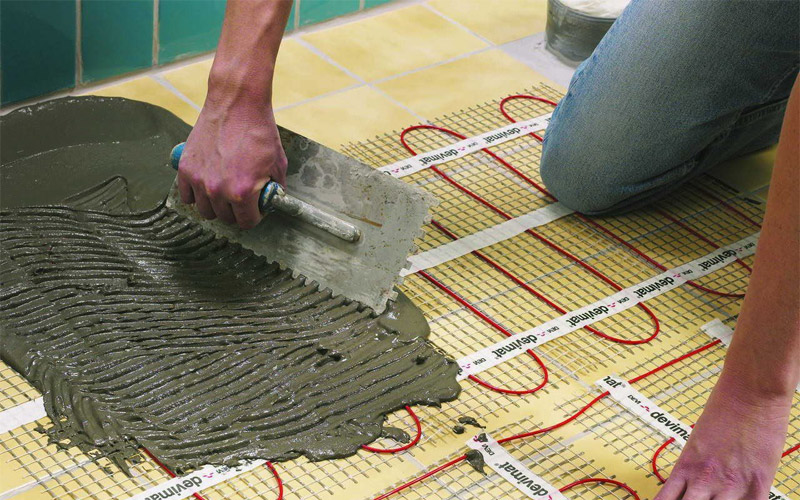
Glue application on mats for laying ceramic tiles.
It is possible in this case to install infrared and warm floors. Having laid them on the base, you can immediately start laying the material that is supposed to finish the floor. But under the tile, do not mount the infrared floor, since the glue does not stick to it. However, if there is a strong desire to do this, then use only the dry method and put sheets of drywall or glass magnesium on the carbon film, and then the tile.
What underfloor heating to use under the laminate, linoleum and carpet
If you are tormented by the question of which floor is better - cable or infrared, about to lay one of these coatings, but it is not supposed to fill the screed, then give preference to the second. For carpet and laminate with linoleum, a thin carbon film is the best option. Its thickness is only 0.3 millimeters, and only it will perfectly warm any of these materials.
How will the underfloor heating system be used
When they install underfloor heating, they usually immediately decide whether there will be any other source of heating in the house besides these floors. As a rule, the main heating system is already available (or planned), and underfloor heating is used to create additional comfort. However, more and more often, underfloor heating is chosen as the main heating system. Therefore, here you need to figure out which warm floor system to use in a particular case.
#1. If the underfloor heating is just an addition to the main heating system.
Here you can afford almost any of the above systems. Naturally, given the fact that different types of underfloor heating require the presence or absence of screed, as well as a certain floor covering. Well, we won’t forget about the fact that the water system is suitable only for floor heating in a large private house with an autonomous heating system. And the rest - the choice is unlimited.
#2. If a warm floor is the only source of heat in a frosty winter.
In this case, one important thing to remember: the heated floor surface area should be no less than seven tenths of the total area. Only then will the house be warm. When installing the heating cable section, it is necessary to lay adjacent cable turns as close to each other as possible. So we will increase the specific power (calculated per square meter), respectively, and heat transfer.
It should be noted that heating mats, which are rigidly assembled, initially have not very large power.There is nothing to be done about it, so they are not suitable as the main source of heat. And deciding on which one to choose a warm floor as the main one, it is better not to even look towards mini mats. But infrared film, water floor or cables will do. At the same time, in a private house with an autonomous heating system, it is best to stop on water-heated floors. Their installation is carried out during the installation of the entire heating system of the house, after which the screed is poured and further decoration is carried out.
